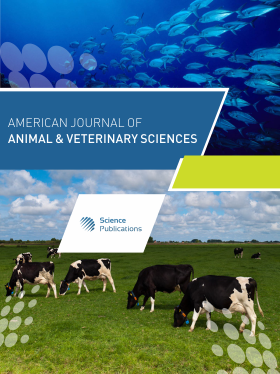Spring Growth Rates of Bee Families and the Level of Certain Amino Acids in Bees-Feeders with Stimulating Feeding
- 1 Department of Aquaculture and Beekeeping of the Institute of Animal Science and Biology, Russian State Agrarian University-Moscow Timiryazev Agricultural Academy, Uzbekistan, Russia
- 2 Department of Microbiology and Immunology, Institute of Agrobiotechnology, Russian State Agrarian University-Moscow Timiryazev Agricultural Academy, Russia
- 3 Institute of Animal Science and Biology, Russian State Agrarian University-Moscow Timiryazev Agricultural Academy, 127550 Moscow, Russian Federation, Russia
- 4 Department of Animal Husbandry and Veterinary Medicine, LLP "Scientific and Production Center of Livestock and Veterinary Medicine, Corresponding Member of the National Academy of Sciences of the Republic of Kazakhstan, Russia
Abstract
It was found that the spring development of bee colonies most actively occurs against the background of the compositional stimulating feeding of honey mead with the addition of the milk mixture "Nanny 2 with a prebiotic" in a complex with cobalt sulfate (group 4), which, in comparison with the background level, increased the average daily egg-laying capacity of queen bees by the second count by 2.48 times and at the height of the season - 3.03 times (in control 2.02 and 2.28 times) with an absolute value of 1814.0 and 2209.0 eggs/day (in control 1459.0 and 1650.0 eggs/day). At the same time, the growth index of the family strength, which is a vector biological component indicating economically useful traits, was maximum during all observation periods in the 3rd and especially in the 4th group, the peak values of which show that from March 18 to May 21 they can be used as families-educators and families of the control (1st group) and 2nd groups - from April 9 to May 21. It was revealed that the abundant secretion by the pharyngeal glands of milk sufficient for feeding 3-4 larvae in worker bees of 9 days of age in spring generation is carried out against the background of stimulating feeding with honey mead containing milk mixture "Nanny 2 with a prebiotic" or with sulphate cobalt with a degree of vitality of their glands in 3.98 points and 3.89 points, respectively (in control 3.74 points). The degree of development of the pharyngeal glands in overwintered workers of the autumn generation recorded in the range from 2.5 to 2.64 points shows that, as nursing bees, they can feed only one larva. To ensure the secretory function of the pharyngeal glands in the hemolymph of 9-day-old worker bees who are nursing bees, the level of lysine should be higher, in comparison with overwintered workers, by 2.37-2.79 times, histidine by 2.47-2.85 times, glycine - 2.32-2.46 times.
DOI: https://doi.org/10.3844/ajavsp.2022.108.112

- 2,517 Views
- 1,904 Downloads
- 0 Citations
Download
Keywords
- Worker Bees
- Queen
- Egg-Laying Capacity
- Amino Acids
